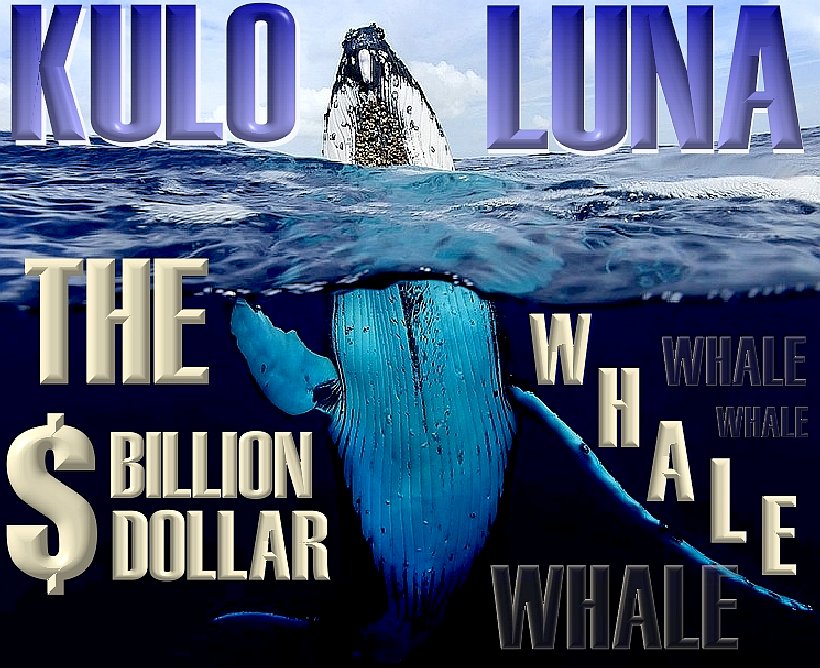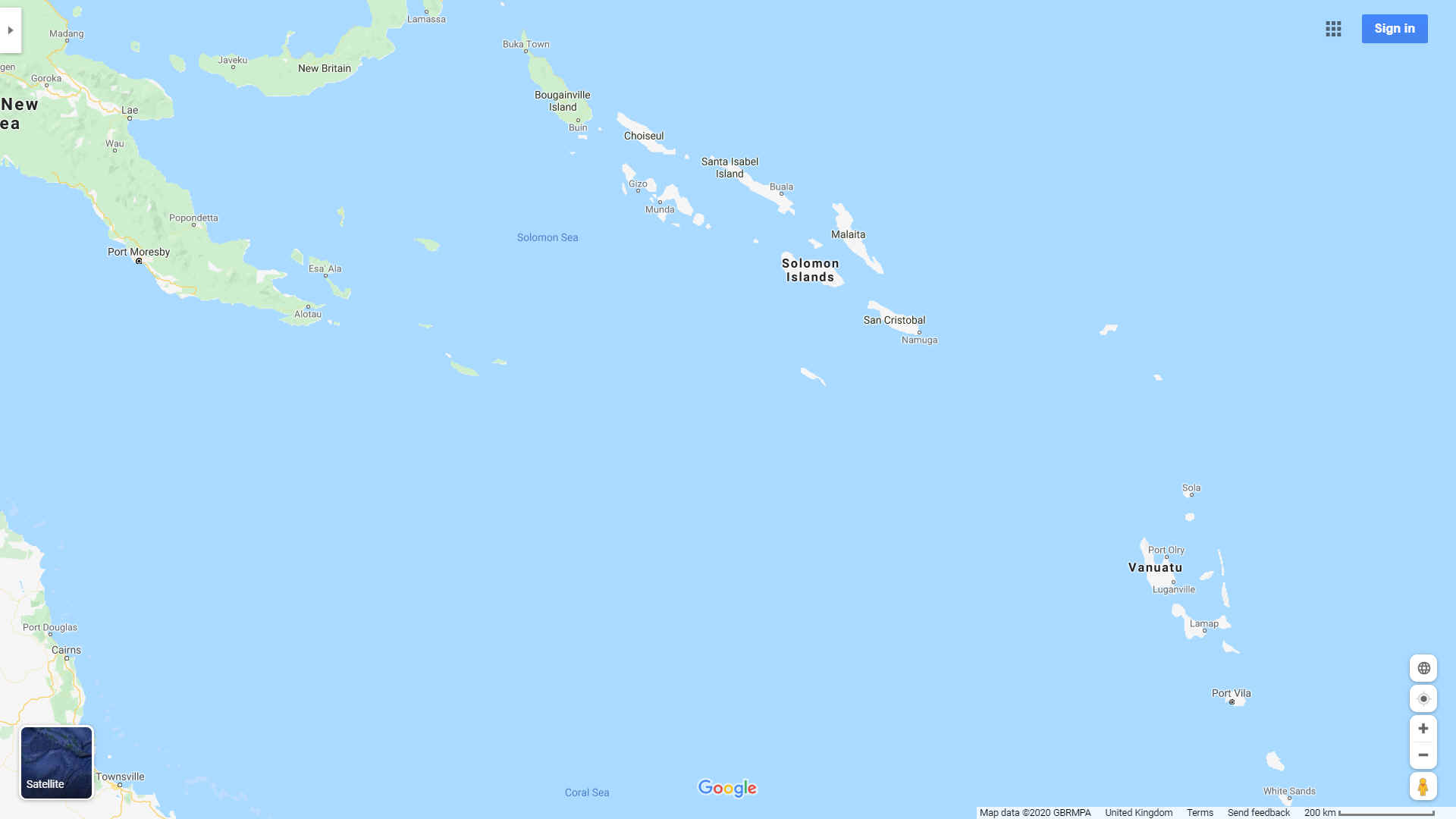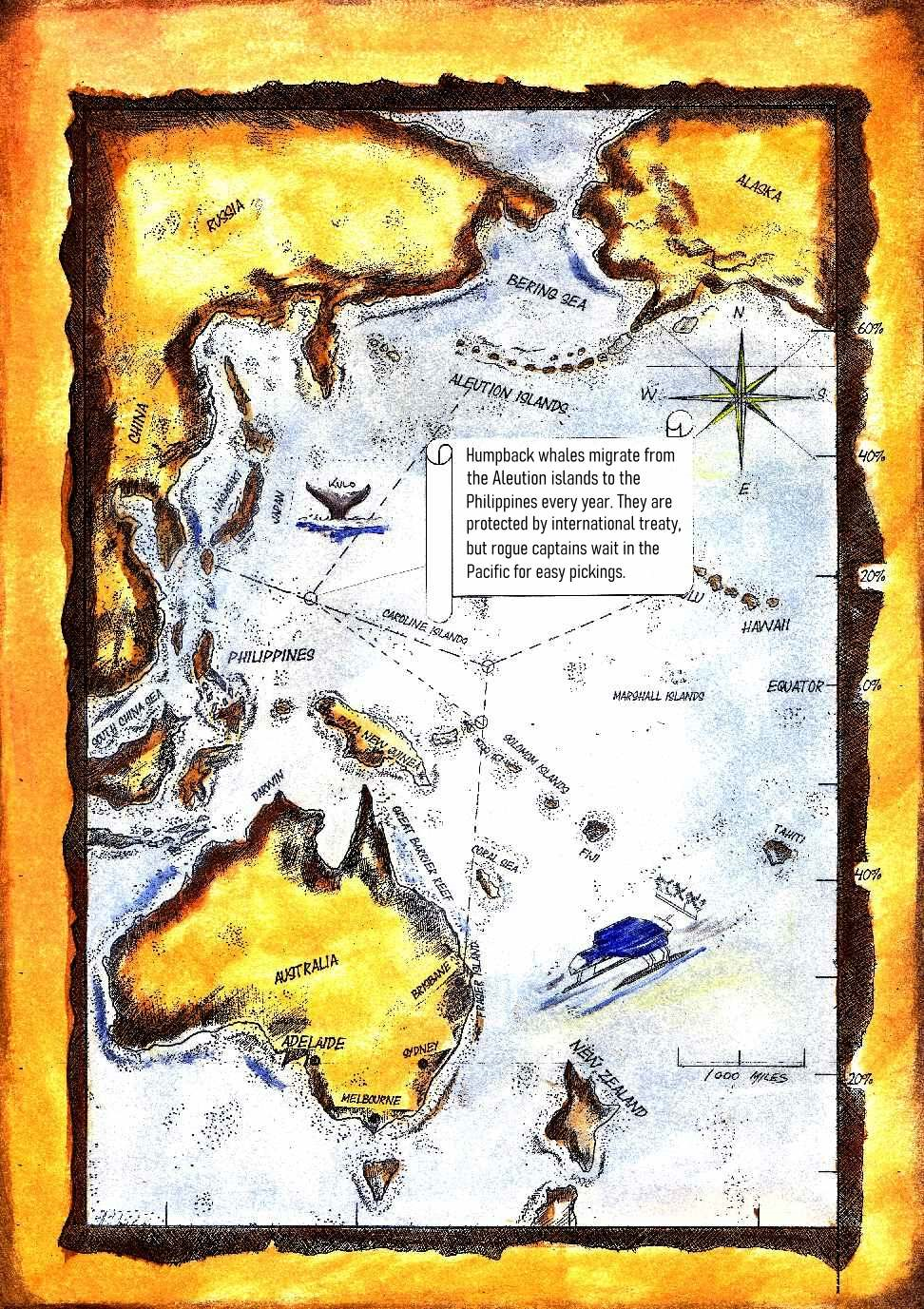|

The
adventures of John Storm and the
Elizabeth
Swann. John Storm is an ocean
adventurer and conservationist. The Elizabeth Swann is a fast solar
powered boat. During a race around the world, news of the sinking of a
pirate whaling ship reaches John Storm and his mate Dan
Hook. They
decide to abandon the race and try and save the whale.
(Original
Book Chapter 33) – Storm Clouds - 150
S, 1550 E
WHALE
NURSE <<<
The sky darkened as heavy clouds filled the horizon and suddenly a wind got up to chill the air. Mariners instinctively recognize situations like this and know of old that they are likely to be in for a rough ride. The phrase, ‘Batten down the Hatches,’ is not a well used cliché for nothing. On a solar boat with large
winged panels, the centuries old saying is given new meaning, since if the solar arrays are not balanced the forces generated are equivalent to the sails of any powerful ocean racer, and might cause lift and finally capsize if not trimmed.
Suki was sitting behind the helm on the transom bench-seats sideways, with one arm over the stern, watching Kulo swim beside the
Elizabeth
Swan. She was not paying too much attention to the changing weather, but closely watching the big whale as she rhythmically shallow-dived and surfaced. Kulo seemed to have recovered a good deal of her strength and tenacity, after the pirate chase ordeal, which had seen her swimming as fast as she could for hundreds of miles taking her close to exhaustion. The near state of collapse, brought on sooner by the loss of blood and her painful back injury.
John was manning the external helm position ahead of Suki. He was absorbed with the task of navigating, standing up to better view the horizon, and consider what action to take against the ever darkening skies. It was time to act.
“Dan,” said John, into the intercom mike. “I’m taking control back from
Captain Nemo, retracting the wings and readying for high seas, you’ve got the com on manual, over.” Click.
“Roger that. How’s our guest? Over.”
“Which one? Suki is keeping tabs on Kulo, they're joined at the hip for now – so, get the cocoa on. We'll join you in a moment. Over and out.”
John looked over at Suki who was now looking back, rather than at Kulo. Although he was obviously concerned at the change in weather, he smiled at her, and she nodded back. She realized from the mixed expression on his face that the weather signs were not good.
John folded the solar wings placing the resultant smaller wing into a central neutral horizontal position, thus presenting a significantly smaller flat section to the wind. He then partly flooded the central hull in submarine fashion, so that the extra displacement from water taken on board as ballast, acted as a sea anchor, lowering more of the boat's hull into the sea and so too the exposed wing edges, considerably reducing the side area presented to the wind and waves as a defence against a broadside. With this configuration the wind would have to be that much more powerful to lift the Elizabeth
Swann out of the water or effect a rolling capsize. John knew he had to do his level best to maintain steerage to be able to head into the waves nose first.
Fortunately, the Elizabeth Swan boat, had not only been designed with foldable wings, but also with adjustable outriggers, that could be raised and lowered independently for exactly the situation the crew were now facing. In fact the swing-wings could also move independently of each other to track the sun overhead as it arced from an eastern sunrise to sunset in the west. With the auto-tracker disengaged the solar wings could be angled to induce down-force, so using the wind to keep the hull in the water during extreme conditions. But that was bold sailing - and now was not the time for taking chances with experiments. Running this low in the sea increased wetted area and displacement which slowed the Swan’s headway to what seemed like a laborious crawl.
Having sorted the vessel, the next thing to look after was their valuable mottled gray and white friend.
“How’s she doing?”
Suki was thoughtful. “Well, whales live in the ocean all year round. I guess she’ll be okay to ride this out and we’ve got a working tag on her now. We can watch out for her on the stern cameras.”
“In that case, we’d better look out for ourselves” said John, motioning with his head for her to get up . They both waved energetically to
Kulo from the stern rail. Kulo seemed to understand that that was his friends signaling to her that they were taking shelter. Humans are so fragile.
John motioned to the hatch, moving ahead of Suki so as to hold it open. “After you maam.” Suki went through and John closed down the rear instruments and followed, locking the hatch down securely.
“Thank you kind sir,” said Suki once inside, genuinely grateful for his thoughtfulness, though affecting a theatrical tone. They went through the bunk area opening the door to the open walkway ahead, closing that and then quickly crossed the walkway to the forward control position, went through that door and sealed that bulkhead behind them to join Dan. John was the perfect gentleman at each opening. They could smell hot chocolate. It would have been near impossible to drink their Belgian treats, but for the spill-proof containers that Dan had served up.
In just under an hour the wind had reached force 8. The waves began to grow higher as a function of increasing wind speed, giving the crew of the Swan a battering. John, Suki and Dan buckled up the six point harnesses, settling back into the reassuringly plush seats and reclined to improve comfort further. Ahead of them, the comprehensive instruments and computer screens showed exactly where they were and the weather pattern they were now caught in. Unfortunately, for them, the pattern was unmistakable, it was a revolving storm, or cyclone, like those now a regular feature causing much devastation on land, on the east coast of America, Gulf of Mexico, and the Indian Ocean. They were facing a hurricane.
They'd navigated between Makiri (formerly San Cristobal) and Santa Cruz, two of the east Solomon Islands group, heading south for the Coral Sea without any sign of things to come just from looking at the sky. The instruments told them another story. The ships sensors kept track of wind-speed and barometric pressure, feeding that information to
Captain
Nemo, the ships computers, via a self-learning program, named Hal,
that tied all the components together, would decide for itself whether to fold the wings or lower the turbine boom. That was if the ship was set to run autonomously. John was still getting used to having the extra pair of robotic hands, so rarely allowed
Hal and Captain Nemo full control. But that facility allowed the crew to concentrate on other things, such as unexpected guests.
The camera to the rear still showed Kulo as a glimpse every now and then, but the radio tag gave a more reassuring beep signal when she was surfaced, a sort of heartbeat reminder, giving direction and distance. Kulo looked forward trying to keep her new friends in echo vision. She’d seen many storms over the years and could sense that this was going to be a big one. But she knew that in order to ride out the storm, she’d have to dive deep down, which she was reluctant to do, because she felt so safe with her new friends in sight. But they’d gone inside their metal cocoons and would be there for quite a while, at least until the storm abated. With a huge intake of air through her twin spout, she dived down into the deep blue sea, making a soft whining noise as she descended all alone followed by a short trumpet. Unlike her male counterparts female humpbacks are not known for choral singing. Humpbacks can submerge for up to 45 minutes to escape surface turbulence, venting their lungs by volume by up to ninety percent, making their respiration one of the most efficient in the animal world.
Kulo took advantage of the huge breath she'd taken and dived deep, forgetting all her worries as she noticed the seabed was not that much further down on her deeper dives.
Kulo liked to dive to about 300 feet normally, but got a thrill in trying to break her own record and once reached almost 1000 feet. She could do this because she was considerably bigger than other humpbacks, so her lungs had greater capacity, tempting her to find her limits. As Kulo felt the need to breathe she came racing to the surface, bursting out of the water and snorting a huge spume of stale air for maximum inhalation, which she repeated twice and down she went again to escape the foaming white cauldron above. After five or six of these dives, the big whale had lost sight and sound of the Elizabeth Swann completely and become a little disorientated. Playtime has the effect of clearing the memory. Then she came back to her situation and began to panic as she realized she'd lost her friends. She frantically searched around for an echo to head toward to no avail.
Aboard the Swann it was not much different. John and Dan were so intent on monitoring the ships performance in the foul weather that they'd left the nursing of Kulo to
Suki. Suki was so exhausted that she had nodded off for a few minutes, coming to again with a start, angry with herself for being so tired. John grabbed a second to look at the rear cameras and could see nothing of Kulo, who had always been easy to spot. In fact Kulo had never strayed far from the time they had rescued her from the sharks.
“Where is Kulo?" said John to Dan and Suki with some urgency in his voice.
Suki scanned the rear cameras and could see nothing. Then Dan zoomed the cameras in and out and saw no sign of the whale, so he rushed to the rear pod, through all the watertight hatches, braving the driving sea spray. He climbed out onto the open rear helm and peered aft north, north-east, panning from right to left. There was no sign of the whale. He waited for a very long twenty minutes in the hope of spotting a breath plume. Nothing. Dan then returned to the front pod, closing all the hatches as he went. As Dan entered the command cabin he looked at Suki for a sign, who motioned with her shoulders that she'd seen nothing. She looked worried. There had been a faint blip from Kulo's tag showing on the monitor, but it looked to be a distance away and disappeared just as quickly as it appeared, so could not be relied on for a fix.
Dan summoned up the courage. "Kulo's nowhere in sight."
Suki confirmed, "Yes, I can't see her either and her beacon is not giving a reliable signal."
They had all been worrying that Kulo could not manage the storm. Dan and Suki kept watch for another two hours. But, they also had the Swan to worry about in the raging storm and could not come about to start a search, nor stop, meaning that they were helpless to do much about relocating their patient.
The turbine had been spinning so fast that they had to apply the brake and angle them ninety degrees to the vertical. John had folded the solar wings centrally completely. Even so, the turbine boom was vibrating from the wind and the ship was being swung left and right noticeably as the high speed gusts caught the tail again and again, each time the blast swinging the hull violently away from its course heading.
"Hells bells," said John, "I'm not sure Elizabeth will take much more of this beating. "Is there any sign at all, have you found her?"
"No skip, I think we've totally lost her."
Just then the Swan crested high on a rogue wave and a whirl of wind grabbed the ship and spun her almost 180 degrees where a broadside caught her full on. They heard a gut wrenching screech of metal and the warning lights on the navigation consoles lit up like a Christmas tree. This was serious.
THE
CORAL SEA
>>>

|
SCENE
|
DESCRIPTION
|
LOCATION
|
|
|
|
|
|
Prologue
|
Shard
Protest
|
51° 30' N, 0° 7' 5.1312''
W
|
|
Chapter
1
|
Arctic
Melt
|
580
W, 750 N
|
|
Chapter
4
|
Sydney
Australia
|
330
S, 1510 E
|
|
Chapter
6
|
Bat
Cave
|
330
20’S, 1520 E
|
|
Chapter
8
|
Whale
Sanctuary
|
200
N, 1600 W
|
|
Chapter
10
|
Pirates
|
330
N, 1290 E
|
|
Chapter
13
|
Solar
Race
|
200
N, 1600 W
|
|
Chapter
14
|
Darwin
to Adelaide
|
130
S, 1310 E – 350 S, 1380 E
|
|
Chapter
15
|
Six
Pack
|
200
N, 1600 W
|
|
Chapter
16
|
Whaling
Chase
|
240
N, 1410 E
|
|
Chapter
20
|
Empty
Ocean
|
200
N, 1600 E (middle of Pacific)
|
|
Chapter
24
|
Billion
Dollar Whale
|
250
N, 1250 E
|
|
Chapter
26
|
Rash
Move
|
140
N, 1800 E
|
|
Chapter
27
|
Off
Course
|
150
N, 1550 E
|
|
Chapter
28
|
Shark
Attack
|
100
N, 1650 E
|
|
Chapter
29
|
Sick
Whale
|
100
N, 1650 E
|
|
Chapter
30
|
Medical
SOS
|
100
N, 1650
E
|
|
Chapter
31
|
Whale
Nurse
|
100
N, 1650 E
|
|
Chapter
33
|
Storm
Clouds
|
150
S, 1550 E
|
|
Chapter
34
|
The
Coral Sea
|
150
S, 1570 E
|
|
Chapter
36
|
Plastic
Island
|
20
S, 1600 E
|
|
Chapter
39
|
Media
Hounds
|
170
S, 1780E
|
|
Chapter
40
|
Breach
of Contract
|
200
S, 1520 E
|
|
Chapter
42
|
Fraser
Island
|
250
S, 1530 E
|
|
Chapter
43
|
Congratulations
|
250
S, 1530 E
|
GRAPHIC
NOVEL
The
graphic novel
translation omits
many of the above chapters (in grey) entirely, and condenses others, aiming for a
lively visual read.

This
story is a modern Moby
Dick, the twist being that there is a happy ending for everyone
involved with the $Billion
Dollar Whale, even the whalers. Herman
Melville would have approved.
Please use our
A-Z INDEX to
navigate this site
|


